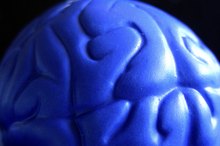What does fact checked mean?
At Healthfully, we strive to deliver objective content that is accurate and up-to-date. Our team periodically reviews articles in order to ensure content quality. The sources cited below consist of evidence from peer-reviewed journals, prominent medical organizations, academic associations, and government data.
The information contained on this site is for informational purposes only, and should not be used as a substitute for the advice of a professional health care provider. Please check with the appropriate physician regarding health questions and concerns. Although we strive to deliver accurate and up-to-date information, no guarantee to that effect is made.
How Long Can a Human Hang Upside Down?
Both children and adults enjoy being upside down. Children hang from monkey bars and trapezes, while adults bungee jump or hang from bars and tables to help with back pain. Doctors don't know all of the physical effects of hanging upside-down, but it can lead to blood clots and, ultimately, death. It’s best to keep the fun (or therapy) in moderation.
If you are experiencing serious medical symptoms, seek emergency treatment immediately.
Significance
Humans evolved as upright creatures. Our bodies use gravity to pump blood to the lower extremities and from the brain. When upside down, this is reversed––the body struggles to get blood to the legs, while blood in the head has a harder time returning to the heart. To combat this, the heart has to work extra hard to keep the blood flowing.
- Humans evolved as upright creatures.
- When upside down, this is reversed––the body struggles to get blood to the legs, while blood in the head has a harder time returning to the heart.
Effects
Amphetamines & Stroke
Learn More
Hanging upside-down for a long time can lead to blood clots, particularly in the brain. The clots and swelling in the brain can then lead to stroke. The brain lacks the muscles that the rest of the body has to pump blood back to the heart. Blindness is another possibility because pressure builds behind the eyes. Blood can also pool in the lungs resulting in a pulmonary oedema.
- Hanging upside-down for a long time can lead to blood clots, particularly in the brain.
- Blood can also pool in the lungs resulting in a pulmonary oedema.
David Blaine
In September 2008, illusionist and stuntman David Blaine suspended himself upside-down in Central Park for three days and two nights in a stunt he called “Dive of Death.” Even though he went through intense training to prepare himself, he had to stand upright at least once an hour for medical checks. No one can hang upside down for long periods of time, and even with the periods of “rest,” David Blaine still risked death.
Uses
The Effects of Immobility on the Cardiovascular System
Learn More
Inversion therapy involves hanging upside-down to alleviate back pain. You can do this in a number of ways, like hanging vertically from a bar or being gently tipped on a table. In principle, hanging upside down removes some of the pressure on your spine, specifically the nerves and disks. While you may experience short-term relief, Dr. Randy A. Shelerud, writing for the Mayo Clinic website, notes that studies of traction "have found the technique ineffective for long-term relief. 2"
- Inversion therapy involves hanging upside-down to alleviate back pain.
- In principle, hanging upside down removes some of the pressure on your spine, specifically the nerves and disks.
Warning
Doctors have no hard and fast numbers on when complications would occur if hanging upside-down for a long time––until David Blaine, no healthy, willing person consented to such a extreme stunt.
Related Articles
References
Writer Bio
Elizabeth Manson has been writing for Demand Studios since September, 2009. Many of her articles appear on eHow.com. She recently received her Bachelor of Arts in English literature and linguistics from McGill University in Montreal and has since taken graduate-level English literature classes at Cleveland State University.








